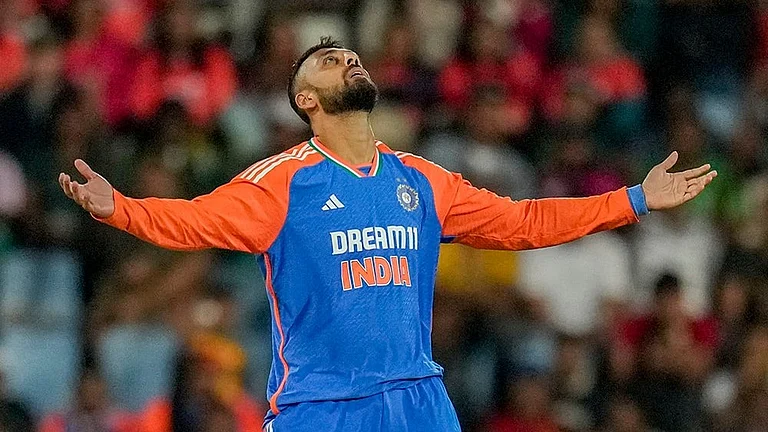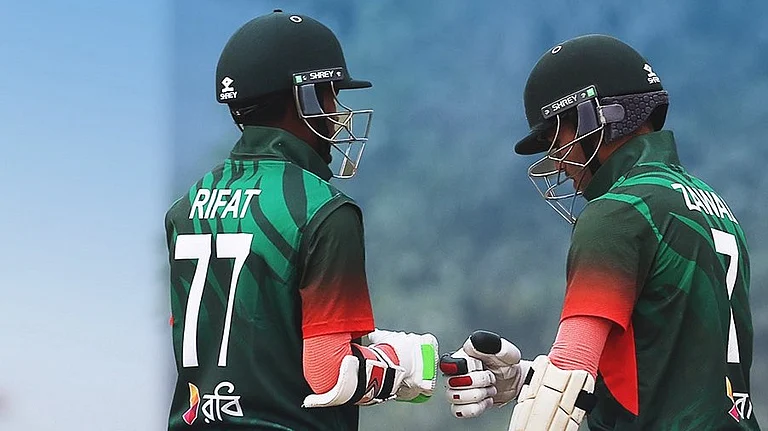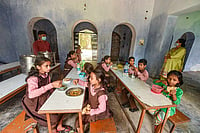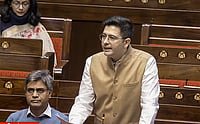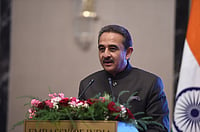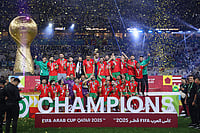Now hang on a minute. Not another Empress of the Planet. Not another beautiful coloniser of the front pages of major newspapers. Not another Indian woman with a magnificent cleavage and formidable conscience, determined to eradicate illiteracy and killer diseases.
Gorgeous women are smiling out of dailies like superbly-modelled cars rolling out from the factory floor. There seems to be a contest every six months. Sushmita Sen and Aishwarya Rai were fabulously new. But after Manpreet Brar, Nafisa Joseph, Priyanka Chopra, Yukta Mookhey, Diana Hayden, and now (phew!) Lara Dutta, my voice is hoarse from cheering. Im suffering from beauty fatigue.
Mind you, I have nothing against these lovely women. Ive never bought the this-is-a-sexist-commodification-of-women argument. After all, the participants are all consenting adults; theyve decided to participate as a reasonable career move. They take their looks seriously. It would be very crotchety to insist they be morally barred from participating in contests and instead confine themselves to slogging up typists ladders or operating telephones in psus.
Why does India keep winning? Is it because it has a large cosmetics market? Or the largest TV audience?
And anyone who has been to Mulund (the Mumbai suburb Yukta Mookhey comes from, a sort of B-grade Karol Bagh, but a suburb on the move, striking out now for its supermarket) will tell you the journey from Mulund to Manhattan is to be lauded as social dynamism. Mookheys escape from Mulund or Manpreet Brars from army fetes or even Laras from her modest life in Bangalore is middle-class mobility, a simple maximisation of available resources.
My problem with Laras victory is that theres too much of it. After a series of Miss Nations and Miss Galaxies, its time we put things in perspective. The media drumbeats cringeworthy in its lack of sophistication. Sure, these pageants should exist. Some people make money and the women get decent career opportunities. But theyre not of any earth-shattering, reality-defining importance. Theyre not a cosmic caste system by which our status as a nations to be sealed nor a triumph of the new economy. Theyre just the manifestation of a new industry, the Beauty Business, thats been around the world for decades. The excitement heres embarrassing.
Laras victory was a technicolour headline for all national dailies (except The Hindu). Zee carried reports through the day. Interviews with her relatives, friends, neighbours, people who have passed her in the street or said hello to her once. The Times of India carried half-page ads announcing the event.
Media cults are becoming notoriously arbitrary. A single good book, a winner of a single beauty pageant, one nice film and hey presto, the personality in question becomes a sort of demi-goddess. The press has a duty not to mislead an increasingly ovine public. Dutta might become a role model (everyones free to choose their own role models) but she shouldnt be held up as one. Her fame is a result of corporate and media sponsors, her achievement relevant only to those whove made money from her and her status will do nothing to alleviate the conditions of her fellow countrymen. So lets get real.
And its all becoming a bit suspicious too. Why does India keep winning? Is it because it has a large cosmetics and clothes market? Is it because it has the largest TV audience and sponsors have much money for the rights? Is it because other countries are simply not bothered about these pageants? Are these contests fixed? But then such questions are probably unfair to the beautiful Lara.
Its fair though to say that India, like Venezuela once, has perfected the beauty manufacturing art. Sabira Merchant for diction, Hemant Trivedi and Ritu Kumar for clothes, Talwalkars for physical fitness. Dentists, dieticians and trainers to push and pummell flesh, smiles, words, into money. Tall, dusky and sharp is the politically correct ideal. Theres a certain morality to dark skin. Conscience is key. Bung in Mother Teresa but shoot from the hip. Show an obsession for the underprivileged but also be cool. Flirt a bit. Make a Joke. The money-making machine is devouring all indefinable human impulses, ironing out individual quirks, codifying them, re-issuing them with saleable labels.
Whys the event so big? Because Indias most powerful media group sponsors it. Lara Dutta won a crown but Pradeep Guha, president of the Times group, won an award too for his role in organising the Femina Miss India Contest. toi may proclaim Let Truth Prevail on its masthead but it pushes the beauty myth to garner bottomlines. Sad, isnt it? I would have felt better if the pageants chief sponsor was a tabloid. Or a fashion glossy. But The Times of India? Its once-reliable pages are hideously illuminated with tacky glamour. Like grandmother drunk at a disco. Like a church pierced by strobe and laser. toi is getting rich but its also ringing the death-knell of intelligent life. It is condemning India to kitsch. Would The Washington Post ever sponsor a fashion show? Would The London Times?
Femina once used to be in the red; post pageants, its swiming in cash. The bidding is intense for Indian TV rights. Sponsors crowd in for individual awards: Miss Beautiful Smile, Miss Beautiful Hair et al. Hot on their heels come the MNCs, hungry for Third World consumers. Dutta, like Hayden and Rai, will become Brand Ambassador. Shell tell us to buy purple lipstick instead of red. To dye our hair russett. High-pressure advertising will convince us that these redundant goods are crucial.
So well buy the shampoo and the rouge but we still wont have any water or roads or electricity. And well fail to see how pathetic it is to link national achievement with a pretty woman whos won a privately-sponsored award.








